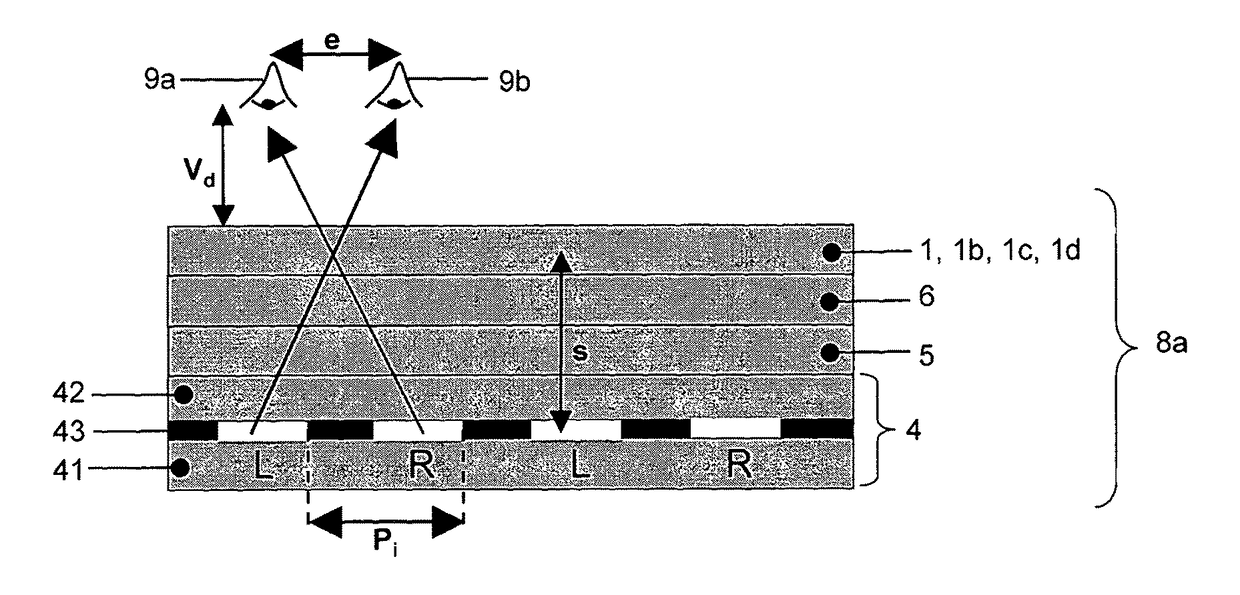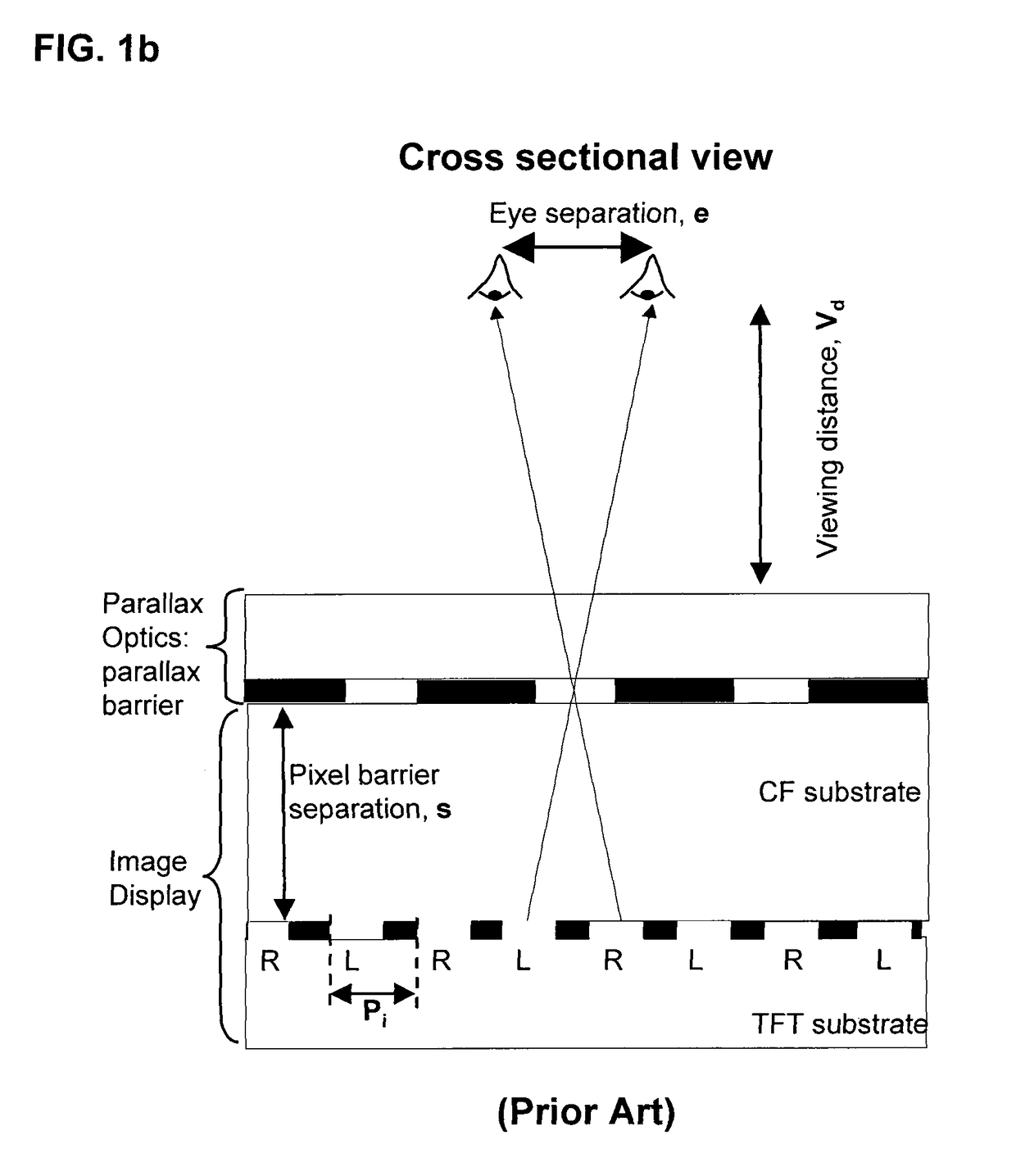Switchable imaging device, switchable optical device, and display
a switchable optical device and switchable technology, applied in optics, instruments, electrical equipment, etc., can solve the problems of reducing the transmission rate by 65%, affecting the efficiency of light use, and affecting the transmission rate, so as to achieve high quality and reduce the transmission rate. , the effect of reducing the transmission ra
- Summary
- Abstract
- Description
- Claims
- Application Information
AI Technical Summary
Benefits of technology
Problems solved by technology
Method used
Image
Examples
Embodiment Construction
[0116]With reference to FIGS. 3a and 3b, FIGS. 4a and 4b and FIGS. 5a and 5b, a switchable imaging optical device 1 is fabricated that comprises a liquid crystal cell. With reference to FIG. 6 and FIG. 7 the switchable imaging optical device 1 is then combined with an image display 4 to yield a 2D-3D switchable display system.
[0117]With reference to FIGS. 3a and 3b, FIGS. 4a and 4b and FIGS. 5a and 5b, fabrication of the switchable imaging optical device 1 will now be described. The first substrate 111 (shown face up in FIG. 3a) and second substrate 121 (shown face up in FIG. 4a) are coated with transparent electrodes 112, 122 respectively, for example, indium tin oxide (ITO). The electrode layer 122 of the second substrate 121 is patterned in a pre-determined fashion, as illustrated by FIG. 4a. The dashed line 124 in FIG. 4a shows the approximate spatial extent of the pixelated area of the image display 4. For a 2-View 3D display system which has 1 pixel per image, the pitch 1222, ...
PUM
 Login to View More
Login to View More Abstract
Description
Claims
Application Information
 Login to View More
Login to View More - R&D
- Intellectual Property
- Life Sciences
- Materials
- Tech Scout
- Unparalleled Data Quality
- Higher Quality Content
- 60% Fewer Hallucinations
Browse by: Latest US Patents, China's latest patents, Technical Efficacy Thesaurus, Application Domain, Technology Topic, Popular Technical Reports.
© 2025 PatSnap. All rights reserved.Legal|Privacy policy|Modern Slavery Act Transparency Statement|Sitemap|About US| Contact US: help@patsnap.com



